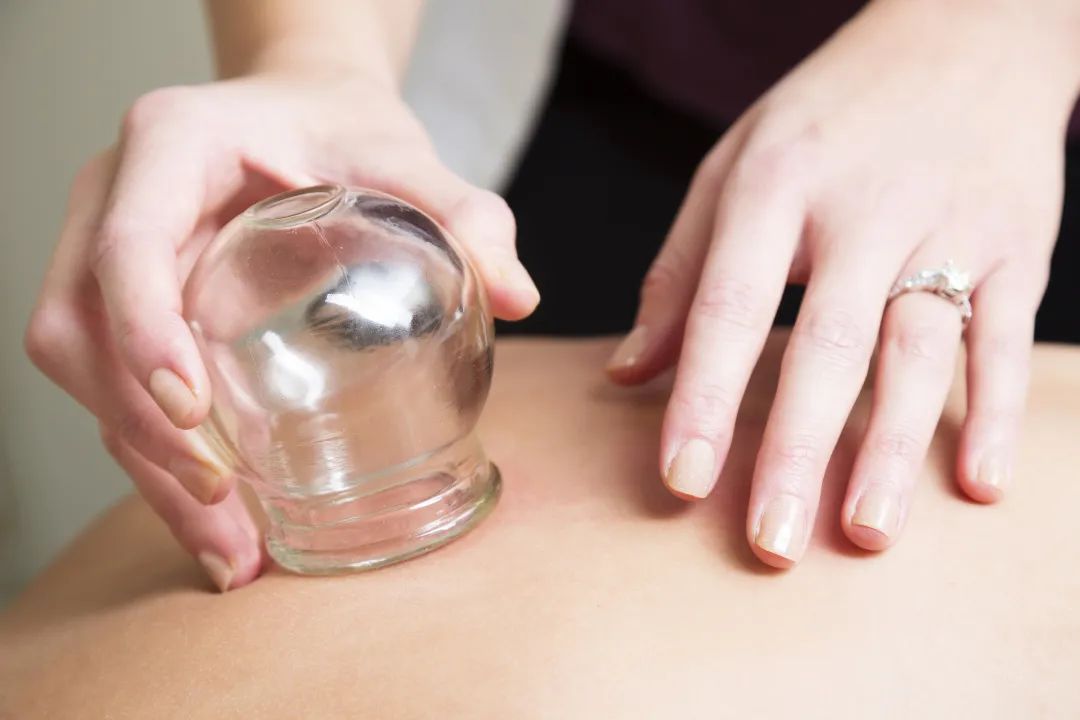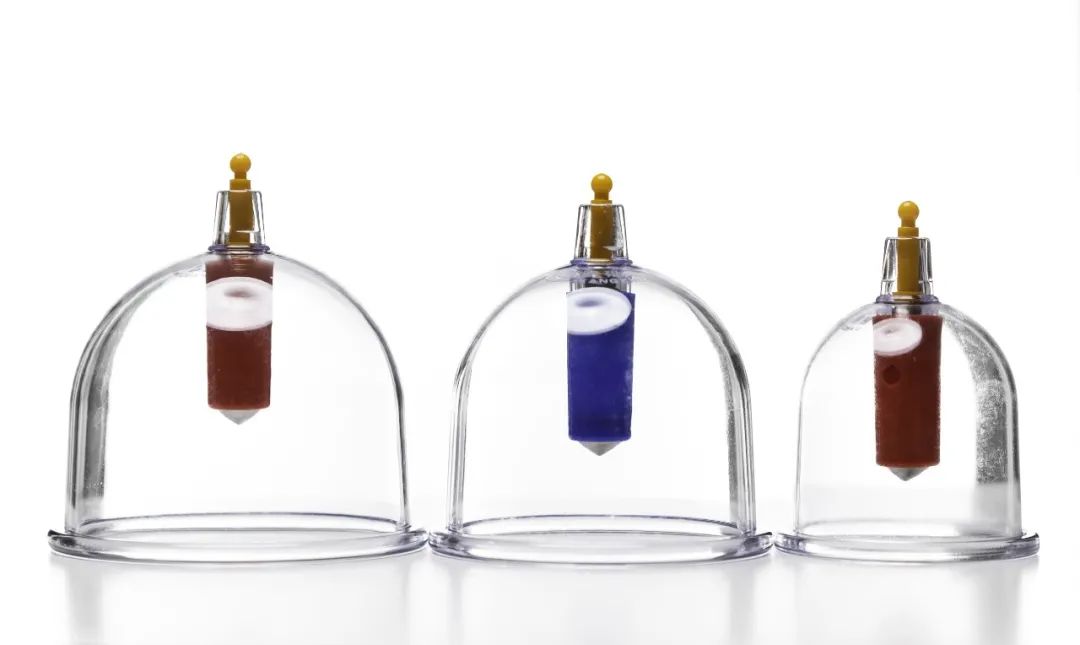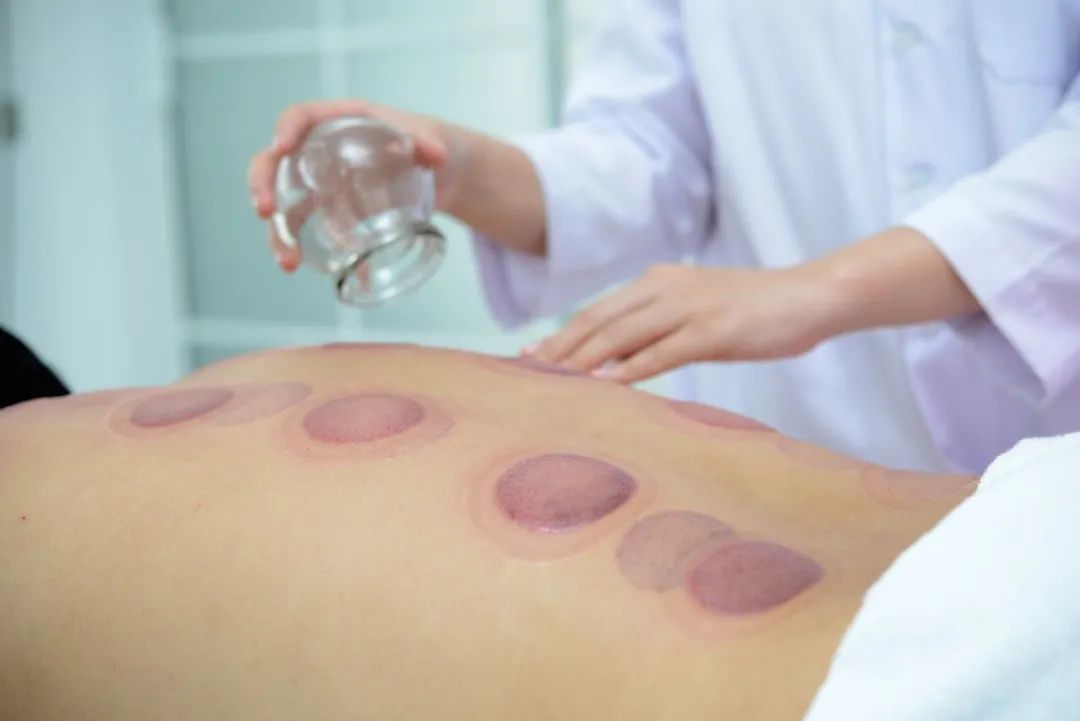A few days ago, a colleague went for cupping therapy and ended up with dark purple circles all over their back, which startled us all. What are these purple marks from cupping? Can cupping harm the body?
Today, let’s discuss the ins and outs of cupping therapy.
What is Cupping Therapy?
Cupping therapy is a traditional treatment method in Traditional Chinese Medicine (TCM). It involves using cups as tools, creating negative pressure inside the cups through fire or suction, and applying them to acupuncture points (腧穴, shùxué) or specific areas of the body to cause localized skin bruising. This method aims to promote the flow of qi (气, qì) and blood (血, xuè), reduce swelling, alleviate pain, and dispel wind and cold.

Who Should Avoid Cupping?
As the saying goes, “Cupping can cure half of the ailments,” but not all diseases can be treated with cupping alone. The following situations are not suitable for cupping therapy.
1. Individuals with skin allergies, ulcers, edema, or those in areas with major blood vessel distribution should avoid cupping. I saw someone cupping on the side of the neck on Weibo, which is close to the carotid artery; it is advisable not to perform cupping in this area lightly.
2. Patients with underlying lung conditions, such as chronic obstructive pulmonary disease (COPD), tuberculosis, lung abscess, or bronchiectasis, should not undergo cupping. Inflammation in the lungs often accompanies damage to the alveoli, and cupping can cause rapid changes in thoracic pressure, leading to the rupture of pulmonary blebs and resulting in spontaneous pneumothorax.
3. Patients with chronic diseases such as diabetes, coronary heart disease, cancer, and blood disorders should also use cupping cautiously, especially not performing it at home.
4. Cupping is not advisable during high fever or convulsions.
5. Women should avoid cupping during menstruation or pregnancy.
6. Cupping is also not recommended after fractures or intoxication.
7. Cupping should not be performed when one is overly full or hungry.

Which is Better: Vacuum Suction Cups or Glass Cups?
In addition to glass and bamboo cups, a new type of suction cup has emerged in recent years. Suction cups use a valve at the top to expel air from the cup, allowing it to adhere to the treatment area.
Suction cups are easier to operate and safer compared to glass cups, allowing users to adjust the suction strength based on their tolerance.
Due to these advantages, suction cups are often more suitable for non-professionals to use at home. However, some professional cupping therapy institutions still prefer glass cups due to their superior heat retention.
Is Longer Cupping Time Better?
No! The typical clinical cupping duration is 5-10 minutes for large cups and 10-15 minutes for small cups. Prolonged cupping can lead to separation of the epidermis and dermis or cause mild burns, resulting in blisters.
If burns or blisters occur due to prolonged cupping, small blisters can be treated with burn ointment (yellow wine or toothpaste should not replace burn ointment), reducing friction to avoid infection.
For larger blisters, a sterilized needle should be used to drain the fluid, followed by applying medication or covering with sterile gauze to prevent infection.
What Are the Purple Marks After Cupping?
After cupping, the body may show red and purple marks. Some people believe that the darker the mark, the better, while others worry that these purple marks indicate an underlying disease.

In fact, the appearance of purple marks is due to the negative pressure during cupping, which causes a rapid increase in blood flow to the area, leading to the passive dilation of blood vessels, primarily small capillaries.
Older individuals or those lacking exercise may have increased fragility of their capillaries. Thus, when blood rapidly fills the area, some capillaries may rupture, resulting in subcutaneous bleeding.
Therefore, the presence or absence of purple marks is normal and mainly depends on the extent of subcutaneous bleeding, so there is no need to deliberately pursue darker marks. Generally, the purple marks will fade after about a week.
If pain or discomfort occurs during cupping, it is essential to inform the practitioner immediately to adjust the pressure or remove the cup and reapply it.
What Should Be Noted About Cupping?
1. Keep warm. During cupping, the treatment area is exposed, so it is essential to avoid wind exposure to prevent chilling. After treatment, dress promptly, and avoid bathing on the day of cupping.
2. Cupping should not be performed on the heart area, delicate skin, broken skin, scarred areas, nipples, or bony protrusions.
3. The same area should not be cupped daily; wait until the previous cupping marks have faded before performing cupping again.
Cupping therapy requires a certain level of theoretical knowledge and operational training. If it is your first time, it is advisable to go to a professional treatment institution where a qualified practitioner can perform the procedure for higher safety!
Additionally, if you wish to use cupping to alleviate or treat ailments, it is recommended to consult a specialist and follow the doctor’s advice to avoid injury.
References: [1] Wang Gaiying. Nursing experience regarding cupping therapy in Traditional Chinese Medicine [J]. Inner Mongolia Journal of Traditional Chinese Medicine, 2013(34):152-153.
*Images from Visual China.

 Please like and share with more people!
Please like and share with more people!

